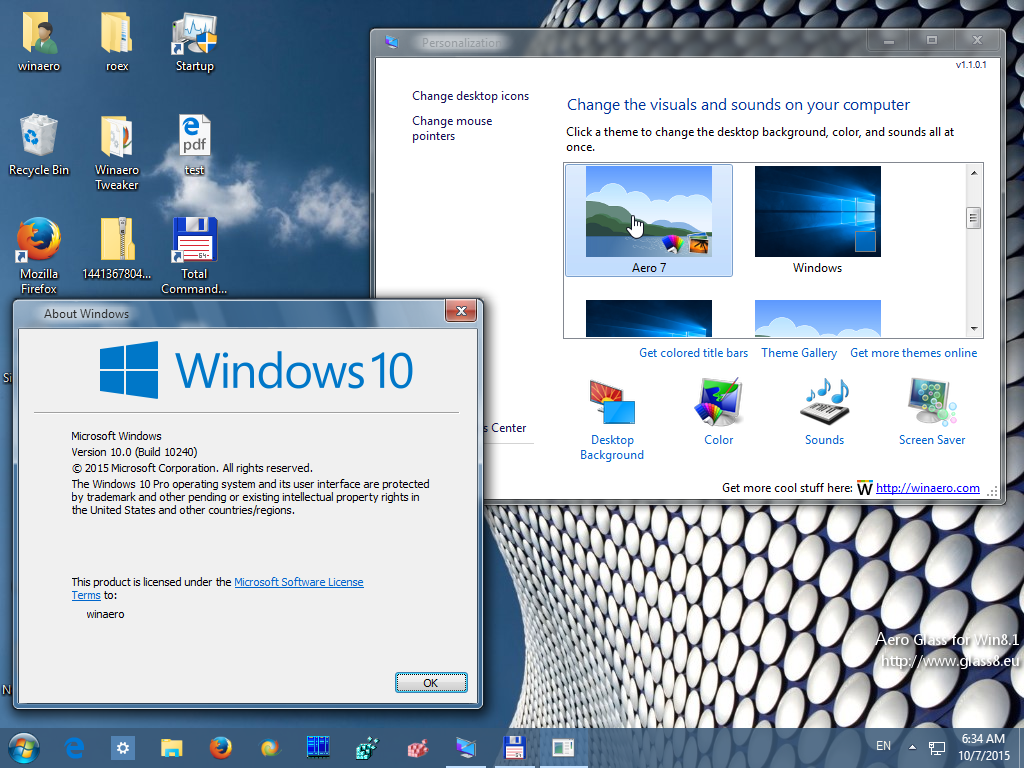Win 10 Win 7 Desktop
Thankfully, the latest version of Windows 10 lets you add some color to the title bars in the settings, letting you make your desktop a little more like Windows 7. Just head to Settings > Personalization > Colors to change them. Apr 9, 2015 - III. Get Rid of the Lock Screen. Hit Windows +R to bring up the Run dialog. Type 'regedit' and hit Enter. Go to HKEY_LOCAL_MACHINE SOFTWARE Policies Microsoft Windows in the registry tree. Right click in the right pane and select New > Key. Rename the key to Personalization and select it.
Share on Facebook Tweet this Share Although of the Windows PC market worldwide and continues to show steady growth, still remains a fan-favorite, falling into second place with a 35 percent market share. While Windows 10 is a more secure, modern platform, there are methods of keeping the Windows 7 aesthetics without sacrificing all the benefits provided by Microsoft’s latest platform. There is no simple way of switching on a Windows 7 mode, but there are a number of things you can change using third-party software and built-in settings. Before starting, as always, you should create a restore point in Windows 10 to revert back to the state before you convert the interface to Windows 7. Chan ge the Start Menu Step 1: For starters, comes highly recommended and serves as a good starting point.
Pc2pc Remote Desktop Win 10 Win 7
With this free tool, you can modify the Windows 10 Start Menu to resemble the version provided in Windows 7. Once installed, you’ll see six entries on your Start Menu listed under “Classic Shell.” Here you will want to choose “Classic Start Menu Settings.” Step 2: On the “Start Menu Style” tab, choose “Windows 7 style” as shown above. Step 3: Next, to download the Windows 7 Start Menu orb. Once downloaded, choose “Custom” near the bottom of the Start Menu Style tab and select the downloaded image. You may need to tweak the button size, as we used “60” given the default setting was too large for our desktop resolution. Step 4: On the “Skin” tab, choose “Windows Aero.” Step 5: Hit “OK” and you’re done. Change the wallpaper Step 1: To install Windows 7 wallpaper,.
Step 2: Right-click on the desktop and select “Personalize.” Step 3: The “Settings” app now appears, defaulting to the “Background” panel. Make sure the “Background” drop-down menu reads “Picture” and then select the “Browse” button to find your downloaded wallpaper. Hide Cortana and Task View Step 1: Right-click on the taskbar, select “Cortana” and then “Hidden” to remove Microsoft’s assistant.

Step 2: Right-click on the taskbar and select “Show Task View button” to disable this feature. Change the colors Step 1: Right-click on the desktop and select “Personalize.” Step 2: Choose “Colors” on the left of the “Settings” app. Step 3: As shown above, we selected “Navy Blue.” Step 4: Next, we’ll switch the colors of the title bar. Right-click on the desktop and select “Personalize.” Step 5: Choose “Colors” on the left side of the “Settings” app. Step 6: Check the “Title bars” option towards the bottom of the panel.
Win 10 Win 7
Swap Microsoft Edge with Internet Explorer Step 1: Right-click on the Microsoft Edge icon and unpin the browser from the taskbar. Step 2: Search for Internet Explorer using the Start Menu’s search field. Step 3: Right-click on the result and select “Pin to taskbar.” Step 4: Open Internet Explorer, select the gear-shaped “Tools” icon in the upper-right corner and select “Internet options.” Step 5: Once the Internet options pop-up appears, select the “Programs” tab. Step 6: On this panel, click “Make Internet Explorer my default browser.” Step 7: Select “Internet Explorer” on the resulting list and then choose the “Set this program by default” setting. Tweak Explorer Here we used the free tool. It’s downloaded as a RAR file so you’ll need to install third-party software to unpack the installer. The file to use is OldNewExplorerCfg.exe, and once launched, here’s what you’ll need to change: Step 1: Select “Use classical drive grouping in This PC.” Step 2: Select “Use libraries; hide folders from This PC.” Step 3: Select “Use command bar instead of Ribbon.” Step 4: Select “Show details pane on the bottom.” Step 5: For Appearance style, you have three options: Default, Silver cream, and Flat white.